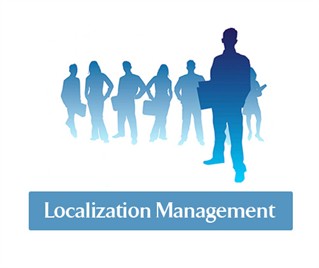5 Tips for Managing Localization in your Organization
As a Localization Manager in an international company, you are in a uniquely challenging position. Your role carries prestige (you enable global sales and may travel internationally to meet your vendor teams and in-country distributors), yet internally you don’t always get a seat at the table. You’re an afterthought. Product meetings that would benefit from your strategic insights on global relevance and issues don’t always include you. You represent a department that “deals with the international stuff” but if pressed, many colleagues couldn’t explain what your team does all day.

You’re accountable for delivering multiple products for every one English version, often with limited staff. The level of understanding of internationalization (I18n) and localization (L10n) across the company can range from the Holy Grail (where both are totally integrated into the entire product development process) to your worst nightmare (a chaotic process that doesn’t officially start until the English product ‘ships’). To feel and be successful, you need a proactive, strategic approach to win the minds and hearts of those with the power to help you succeed.
Here are five proven win-win strategies for localization management success:
-
Master the art of project management. Though your technical skills are important, project management is said to be 10% science and 90% art. Like it or not, the art is in getting people to like you and to want to work with you. Your skill set should include a capacity for the “soft skills” that make up the 90% art: leadership, motivation, inspiration, savvy networking, persuasion, and teamwork. Easier said than done… and extroverts have it easier here. You love your job and love what you deliver to your global markets, yet the English product team may not care, as they’re up to their necks in deadlines and bugs. It’s time to get creative. This is your chance to bring on the charm. Don’t underestimate the power of doing favors for engineers: showing an interest in their coding skills, bringing them lunch, etc. Connect with documentation teams through your mutual love of words, language, and communication. Get to know how these people tick and you’ll get clues about how to win them over.
Get thyself a seat at the executive table. Whether it’s you or your boss, or maybe a VP of International Sales, ensure one of you gets consistent input into product development decisions. You should strategize in advance of each meeting to ensure relevant issues are brought to the table. The executive team needs to know that your expertise can help them avoid mistakes that would adversely impact international customers and the bottom line. As well, global customer feedback can lead to vast improvements to the products and only you can deliver those inputs.
Befriend your CFO. Use real-world examples to convince the CFO that the more efficient the localization process, the more money the company makes. A properly internationalized product saves money during localization, and realistic staff levels and effective processes minimize rework and mistakes. As your department’s reputation grows, your new friend the CFO will rally for the resources you need.
Lobby for a global engineering team. In many companies with mature global markets, the English product engineers are also the localized product engineers. Ownership and skin in the game are the key concepts here. There’s no benefit to sloppy coding or bugs in the English version when the same engineer has ownership of all the localized versions.
Nurture strong relationships with your localization partners. Last, but absolutely not least, prioritize and nurture a strong relationship with your localization partners. Giving them as much support as you can is a clear win-win. Educate them on what your products are and what they do. Context is a top complaint among translators who need screenshots, visuals, or documents to guide them in selecting the most appropriate translations. Your project manager is your lifeline to quality deliverables. Treat them like gold, but if the fit is not right, ask for another—a strong client/PM relationship based on mutual respect and trust will virtually guarantee their commitment to make you shine through top of the line customer service and quality deliverables. The biggest potential for win-win scenarios with localization is the client-vendor relationship.
